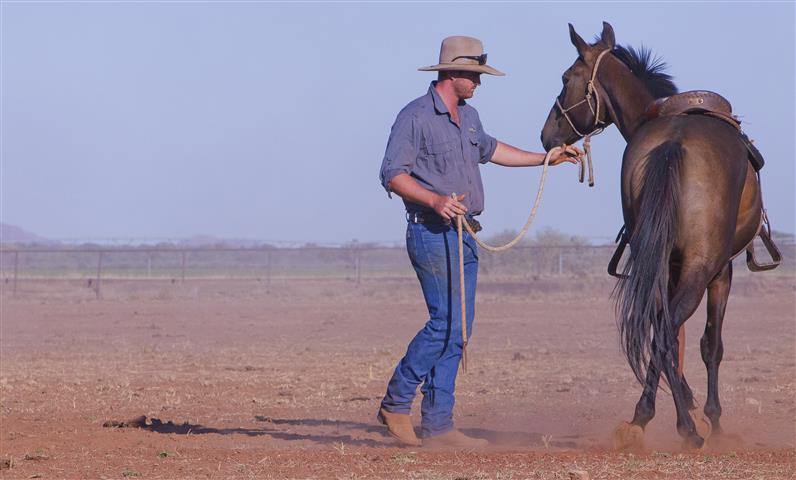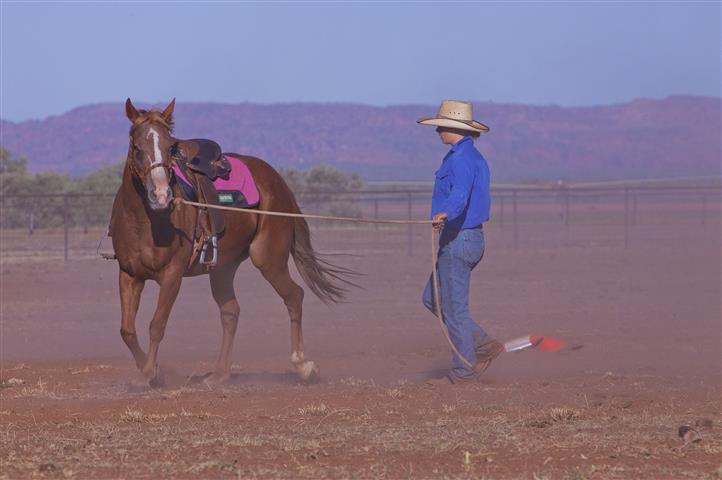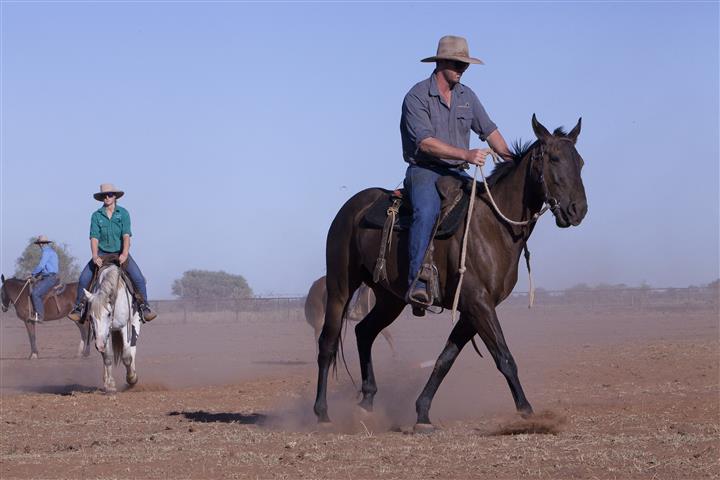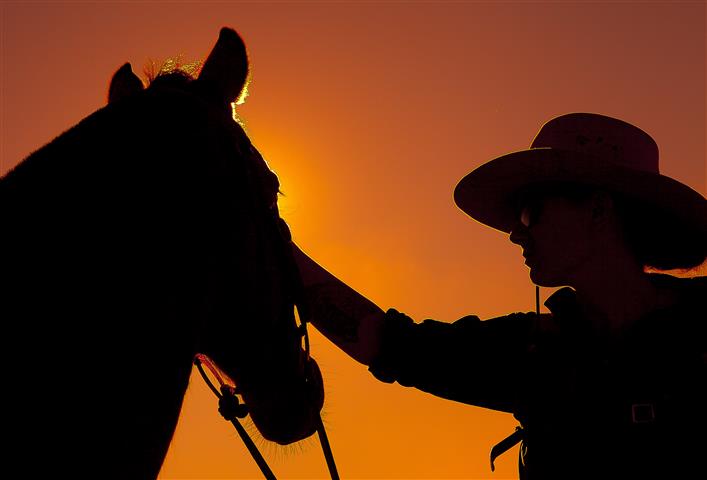Breaking in the colts
Host: Liveringa Station
Written by Woodrow (Glenn Staines) – Head Stockman, Liveringa Station.
How do you break in a horse? As the saying goes, there is more than one way to skin a cat – as is with horse breaking. After all, how do you convince a 500kg animal that out-does you in size and strength, speed and power, ten-to-one, that it should listen to you?
Station horses generally get broken in between two and five years of age. When you first separate a horse from other horses (their ‘herd’) their instinct is flight or fight. With the right pressure, they realise you aren’t looking to hurt them, so it is generally only the flight instinct you will have to deal with.
 Woodrow is getting some forward movement from his horse. He is teaching his horse to move freely on the ground first before getting on his back.
Woodrow is getting some forward movement from his horse. He is teaching his horse to move freely on the ground first before getting on his back.
The horse is the complete opposite to a dog. You can’t shower them in love and in return hope that they will come running up to you every day looking for a pat! A horse generally doesn’t want to know you and is quite happy hanging in the paddock without your company. So what do you do?
One option is to put the horse in a circular yard about 12m in diameter – a “round yard”. When you approach an unhandled, unbroken horse, he is going to run – and run fast! By using a round yard, you are forcing the horse to become de-sensitized to your pressure. He will run ‘round and ‘round until he realises that you aren’t going to hurt him and eventually he will be willing to “talk” to you. This is a really cool process because eventually you start having a conversation with the horse when he slows down. You have to wait until he is ready because if you force him into things, you end up having trouble later on.
You have to work with a horse, not against him. After the initial process of getting a handle on the horse, then comes the stage of gaining trust. You can spend days trying to expose a horse to different things and de-sensitizing it, but I think just as much importance should be placed on getting the horse to trust you because once you get the trust, then you can tackle more situations because the horse trusts you won’t get him into a dangerous situation that will harm him.
 Grace working with “Blondie” at a Liveringa horsemanship school.
Grace working with “Blondie” at a Liveringa horsemanship school.
Then comes the “mouthing” – showing the horse how to respond to the bit in his mouth. After this, you need to teach him how to deal with your weight on his back. The process generally takes between three days to a week and if you play your cards right, you will be riding your “breaker” out and about in a relatively short time.
 Woodrow working on his turns.
Woodrow working on his turns.
The hardest part about a young horse is having to teach him every little thing – stopping, turning, backing up are all things that require time and patience. The other difficult part is riding – being ready for anything is physically draining. Going for a ride and being ready at any moment for a horse to catch fright – and knowing that if you don’t respond quickly, you have possibly a very long walk back ahead of you!
That’s the thing with colts, you can be riding along, having a nice ride and the smallest thing can set them off into panic mode, questioning why there is this strange weight on their back. It takes time and practice on your behalf to keep a level head and help them think their way through the situation.
All in all, when you take a horse with little knowledge of people and convince him that it’s okay to allow a person on his back and to run through the country side doing a job (and even, if you’re lucky, have the horse enjoy his job) it is a really rewarding experience and one that I have thoroughly enjoyed.
 Ashlee, at days end . . .
Ashlee, at days end . . .
